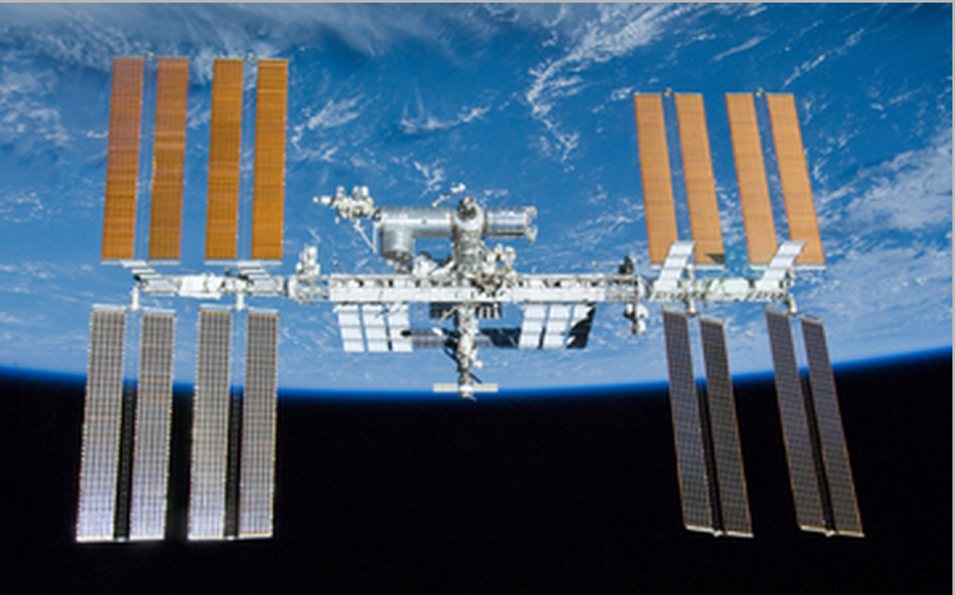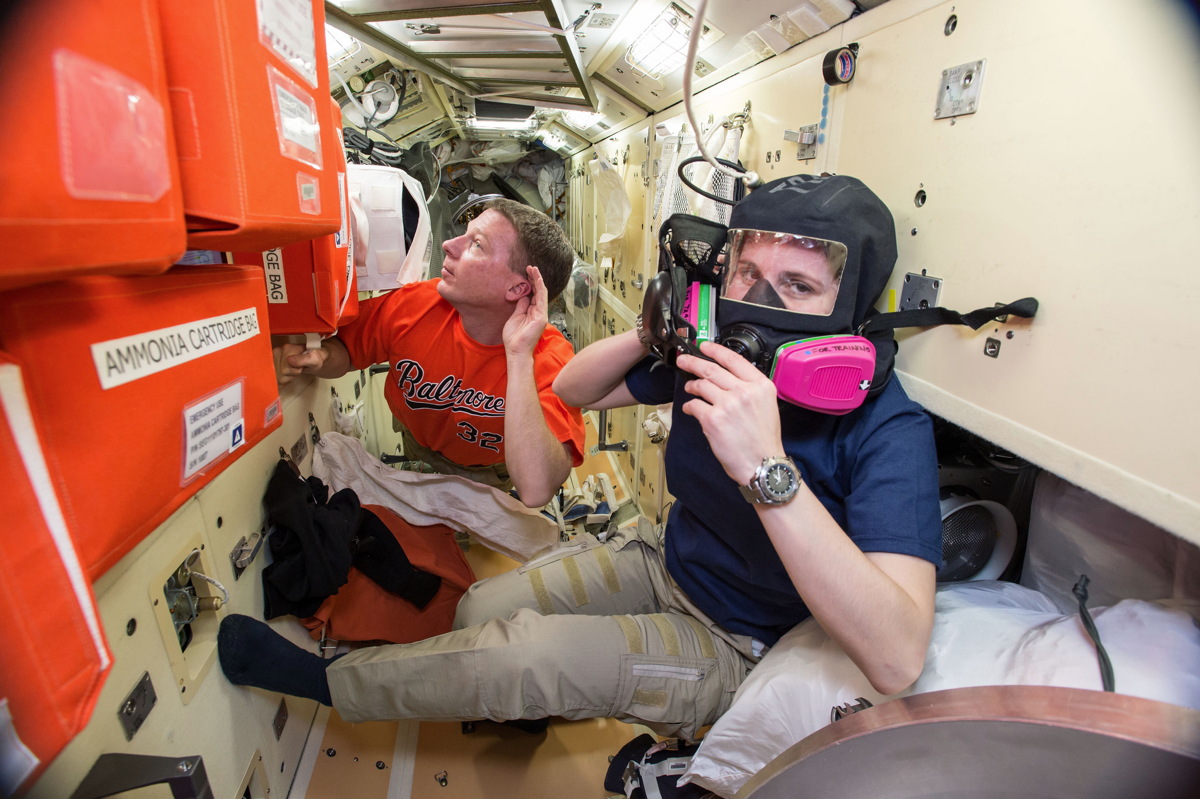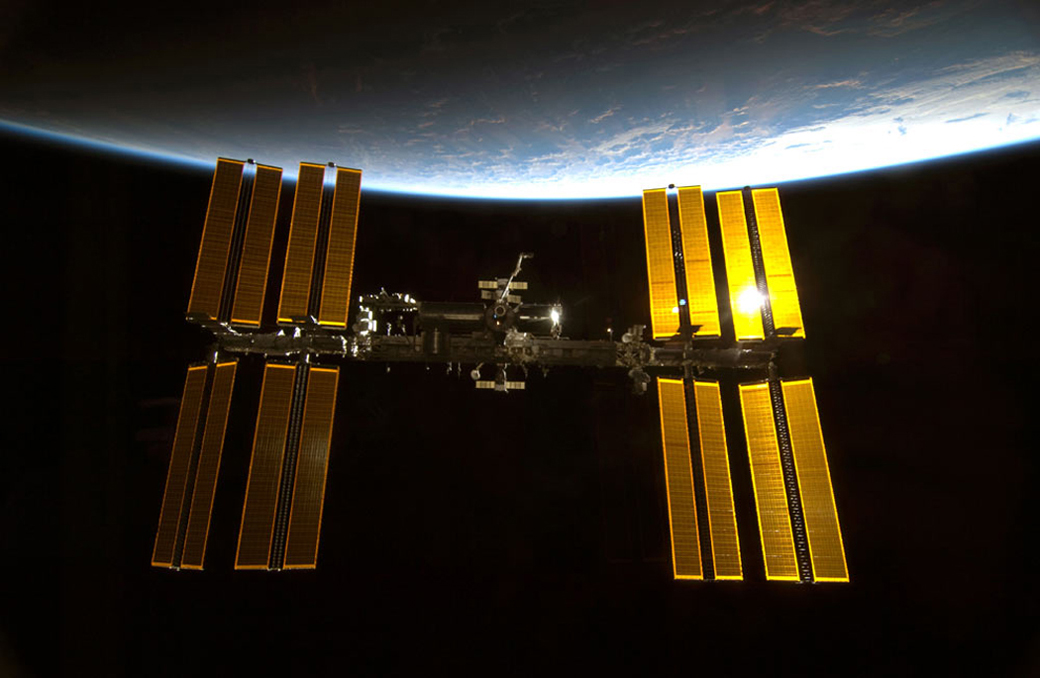Space Station Ammonia Leak Scare Likely a False Alarm, NASA Says

A potentially scary ammonia leak on the International Space Station triggered an evacuation of astronauts and cosmonauts to the Russian side of the orbiting outpost early Wednesday (Jan. 14), but NASA flight controllers now think it was likely a false alarm.
Space agency officials now think that the alarm, which sounded at about 4 a.m. EST (0900 GMT) Wednesday, may have been caused by a malfunctioning piece of equipment, and not a leak of the toxic gas into the U.S. side of the orbiting outpost (which includes the European, Japanese and U.S. modules). NASA astronauts Terry Virts, Barry "Butch" Wilmore and European Space Agency astronaut Samantha Cristoforetti are all safe and had an impromptu day off due to the evacuation. The crewmembers have been allowed back into the U.S. segment after measurements taken after 3 p.m. EST (2000 GMT) showed no sign of ammonia in the outpost's atmosphere.
"At this point, the team does not believe we leaked ammonia," Mike Suffredini, the manager of NASA's International Space Station program office, said during a live update on NASA TV today. "What we are dealing with is this failure of probably a card inside of one of our multiplexer-demultiplexers. It's just a computer that sends telemetry down [to Earth] and sends commands back up [to the space station.]" [Space Station's Cooling System Explained (Infographic)]

The three astronauts and their fellow crewmembers, Russian cosmonauts Elena Serova, Alexander Samokutyaev and Anton Shkaplerov, have enough food to last them for a while on the Russian side of the station, officials have said.
"Hey everybody, thanks for your concern," Cristoforetti wrote on Twitter today. "We're all safe & doing well in the Russian segment."
Mission Controllers are still running tests to confirm that a leak didn't trigger the alarm. Ground controllers were worried that ammonia was leaking into a water loop used as part of a system to control the temperature on the International Space Station. Suffredini added that they then saw a pressure increase in the cabin, which also could have indicated an ammonia leak.
"There's a possibility that this is a combination of sensor problems, [computer] partial failures, and thermal effects all thrown together in the exact wrong way to make it look like this was your classic ammonia leak," astronaut James Kelly radioed to Wilmore from Houston earlier in the day.
Get the Space.com Newsletter
Breaking space news, the latest updates on rocket launches, skywatching events and more!

Research initially scheduled for today — including a feeding for fruit flies on the outpost — can likely be rescheduled without much problem, Suffredini added.
Astronauts have evacuated the United States side of the International Space Station two times during false alarms that could have indicated a leak, NASA spokesman Rob Navias told Space.com via email. Station crewmembers have not had to evacuate due to a real leaks before.
Editor's Note: This story was updated at 4:37 p.m. EST (2137 GMT) with new information about the space station evacuation. The crewmembers are now allowed to enter the U.S. segment again.
Follow Miriam Kramer @mirikramer. Follow us @Spacedotcom, Facebook and Google+. Original article on Space.com.
Join our Space Forums to keep talking space on the latest missions, night sky and more! And if you have a news tip, correction or comment, let us know at: community@space.com.

Miriam Kramer joined Space.com as a Staff Writer in December 2012. Since then, she has floated in weightlessness on a zero-gravity flight, felt the pull of 4-Gs in a trainer aircraft and watched rockets soar into space from Florida and Virginia. She also served as Space.com's lead space entertainment reporter, and enjoys all aspects of space news, astronomy and commercial spaceflight. Miriam has also presented space stories during live interviews with Fox News and other TV and radio outlets. She originally hails from Knoxville, Tennessee where she and her family would take trips to dark spots on the outskirts of town to watch meteor showers every year. She loves to travel and one day hopes to see the northern lights in person. Miriam is currently a space reporter with Axios, writing the Axios Space newsletter. You can follow Miriam on Twitter.









